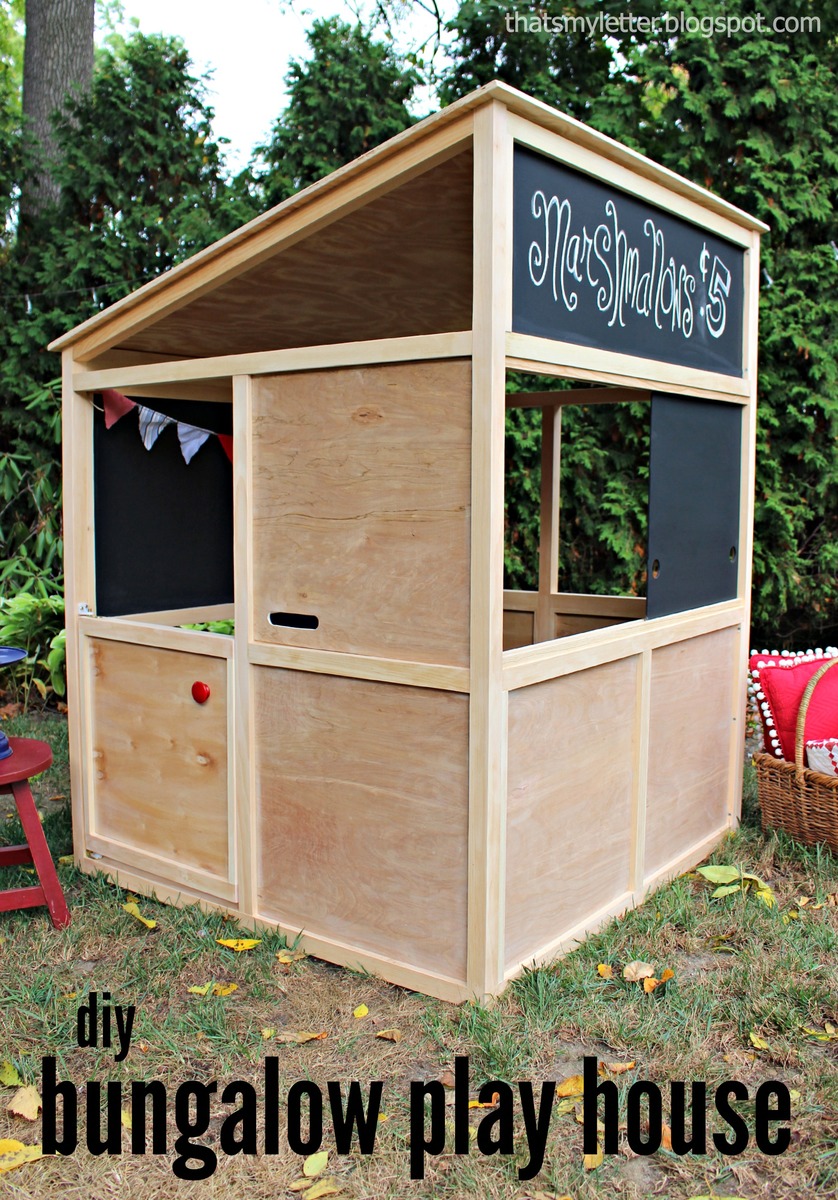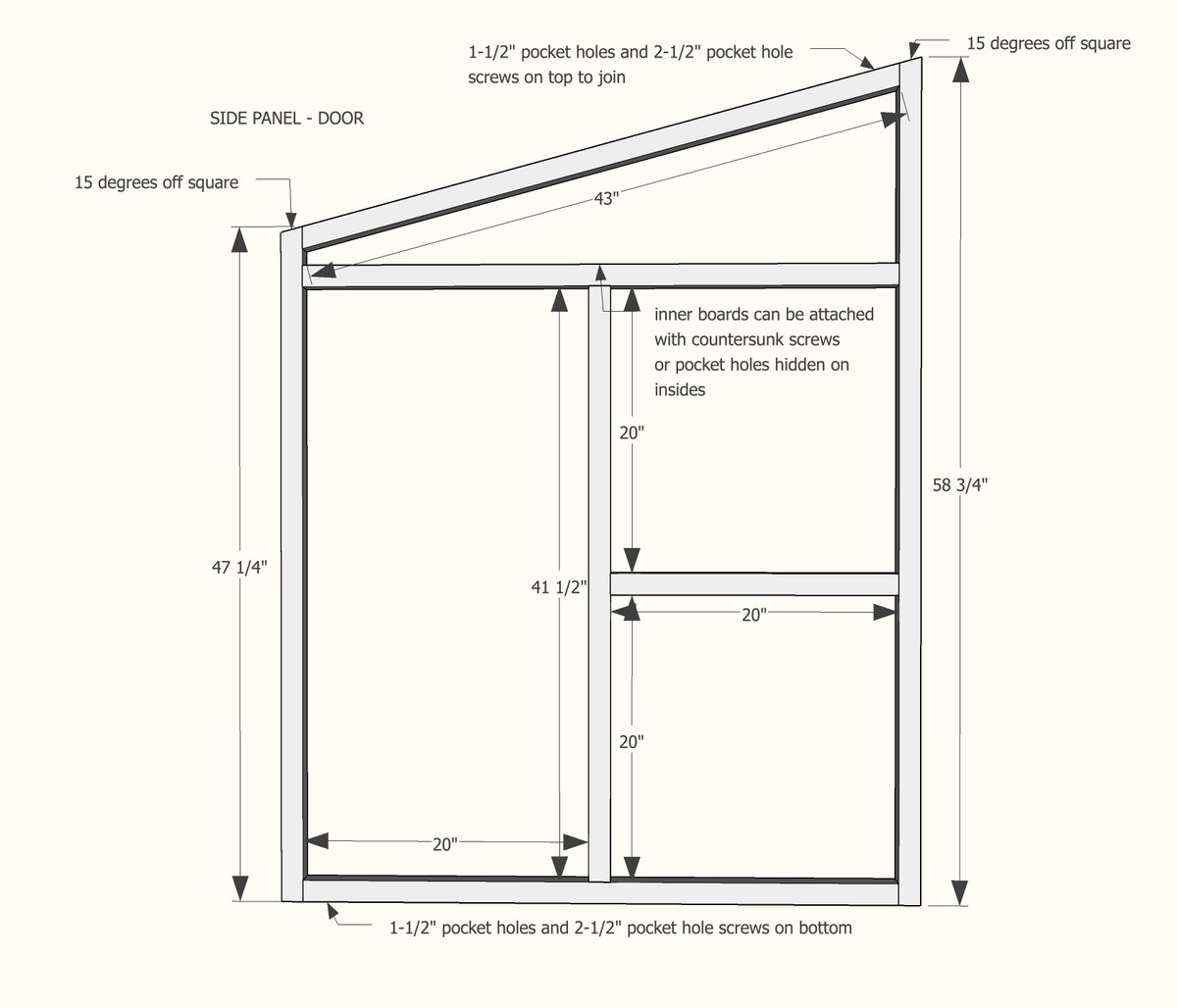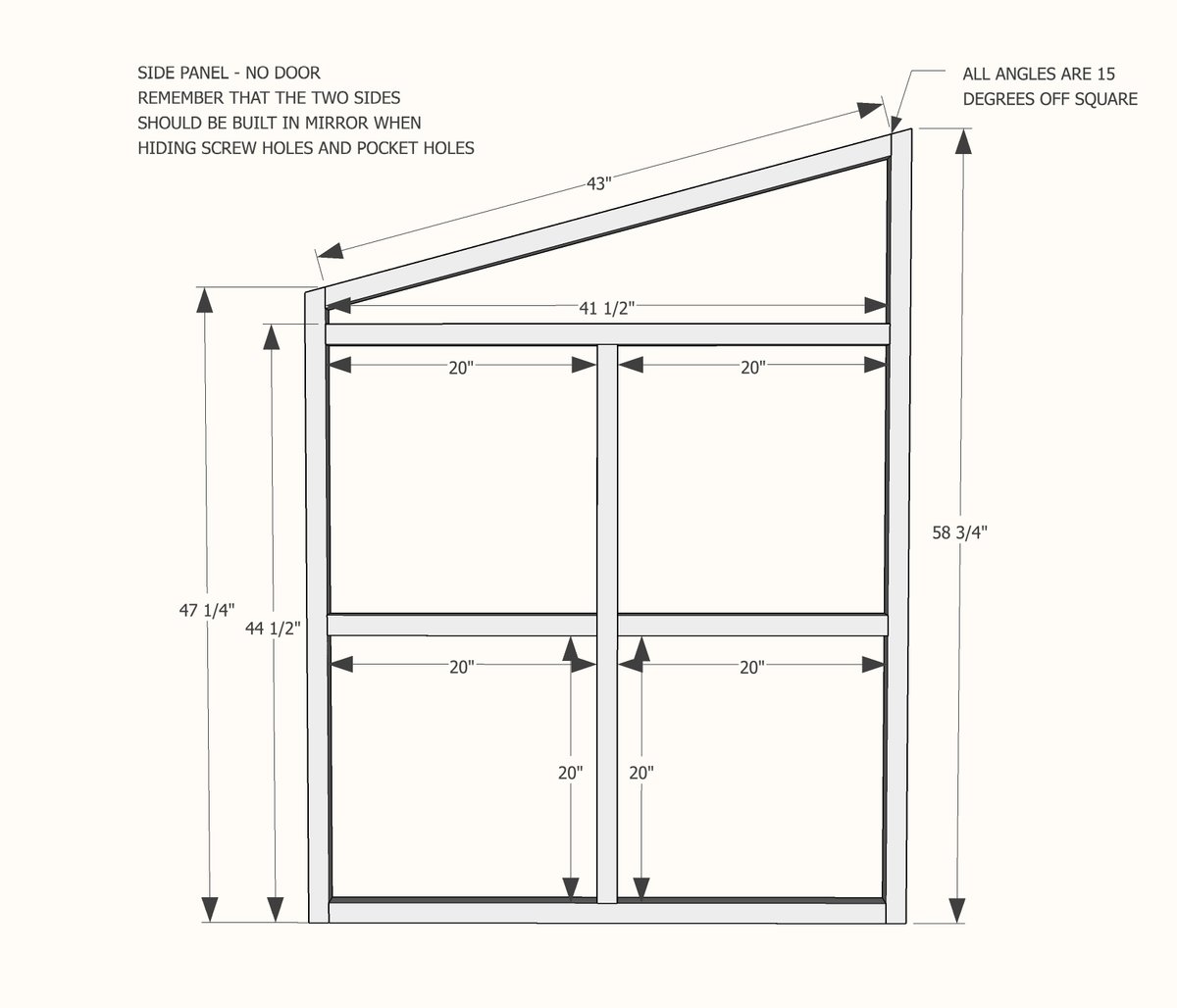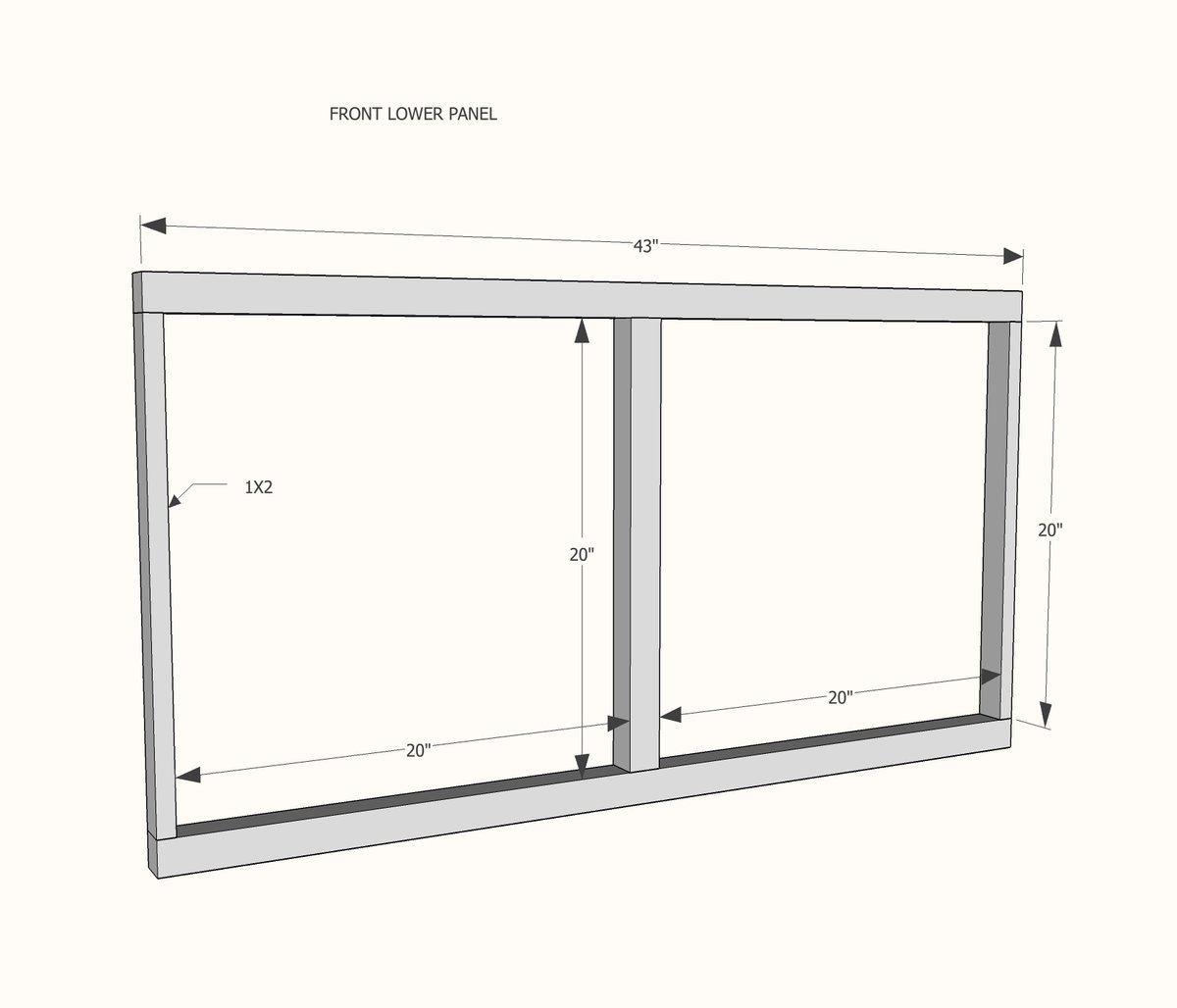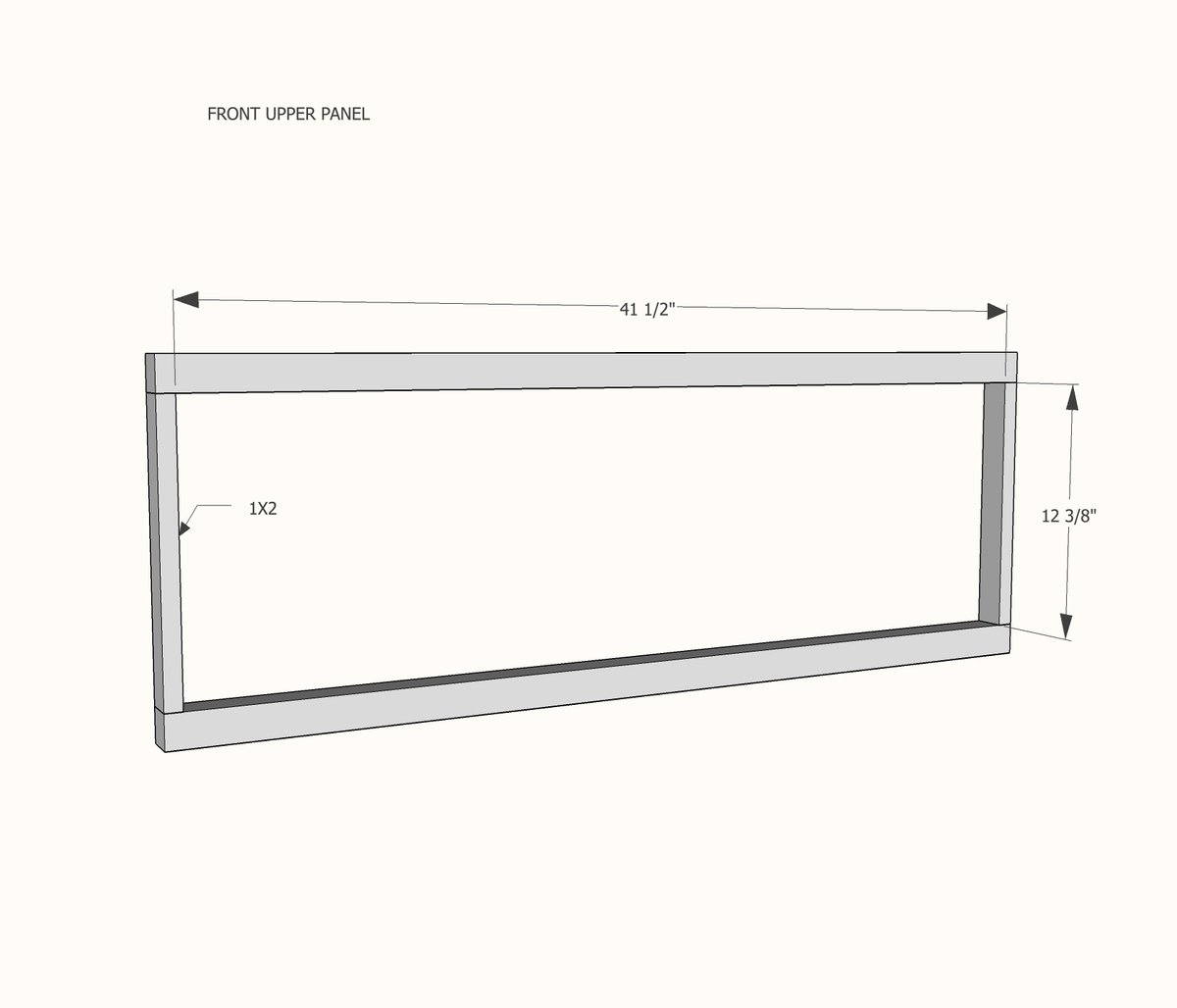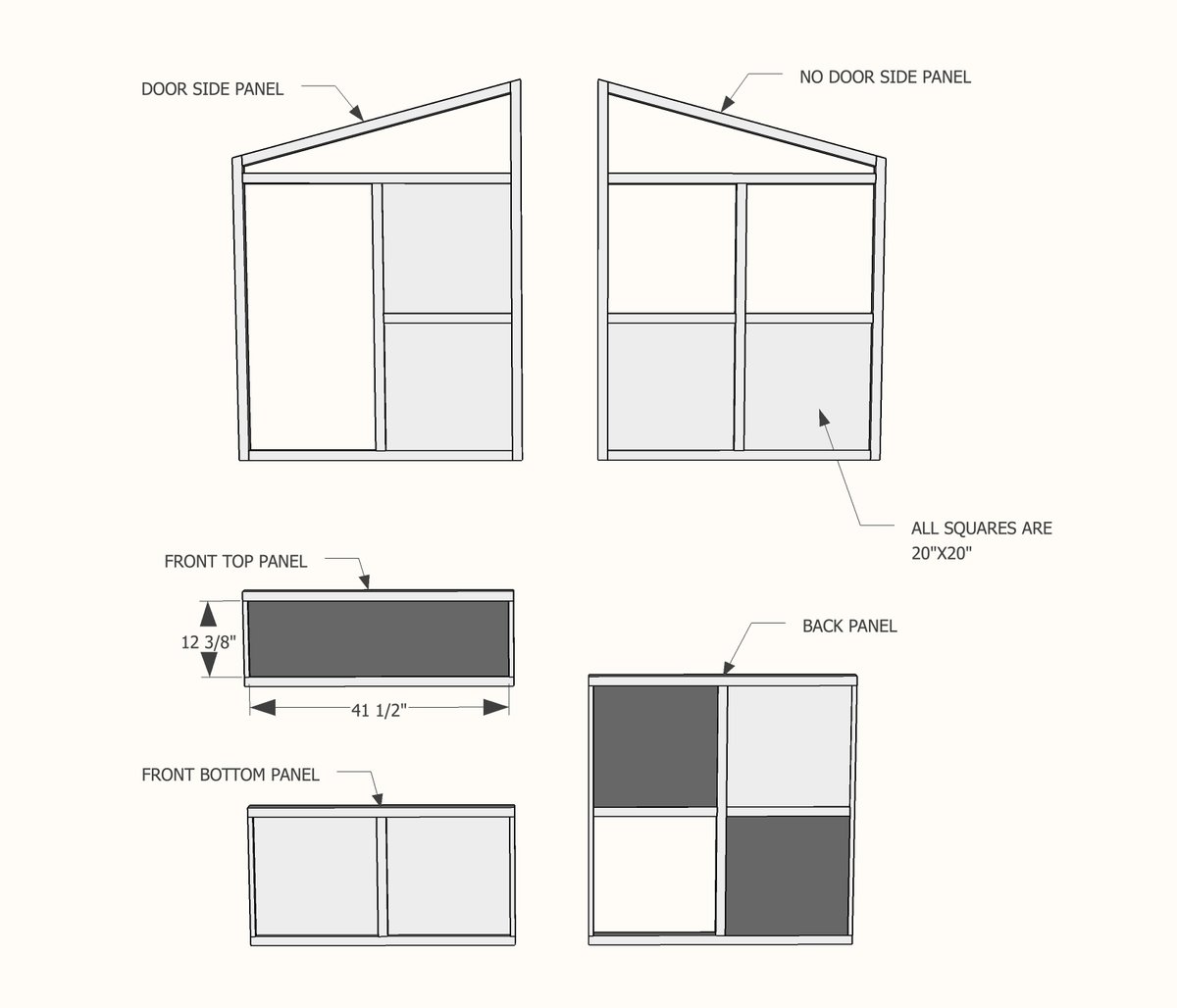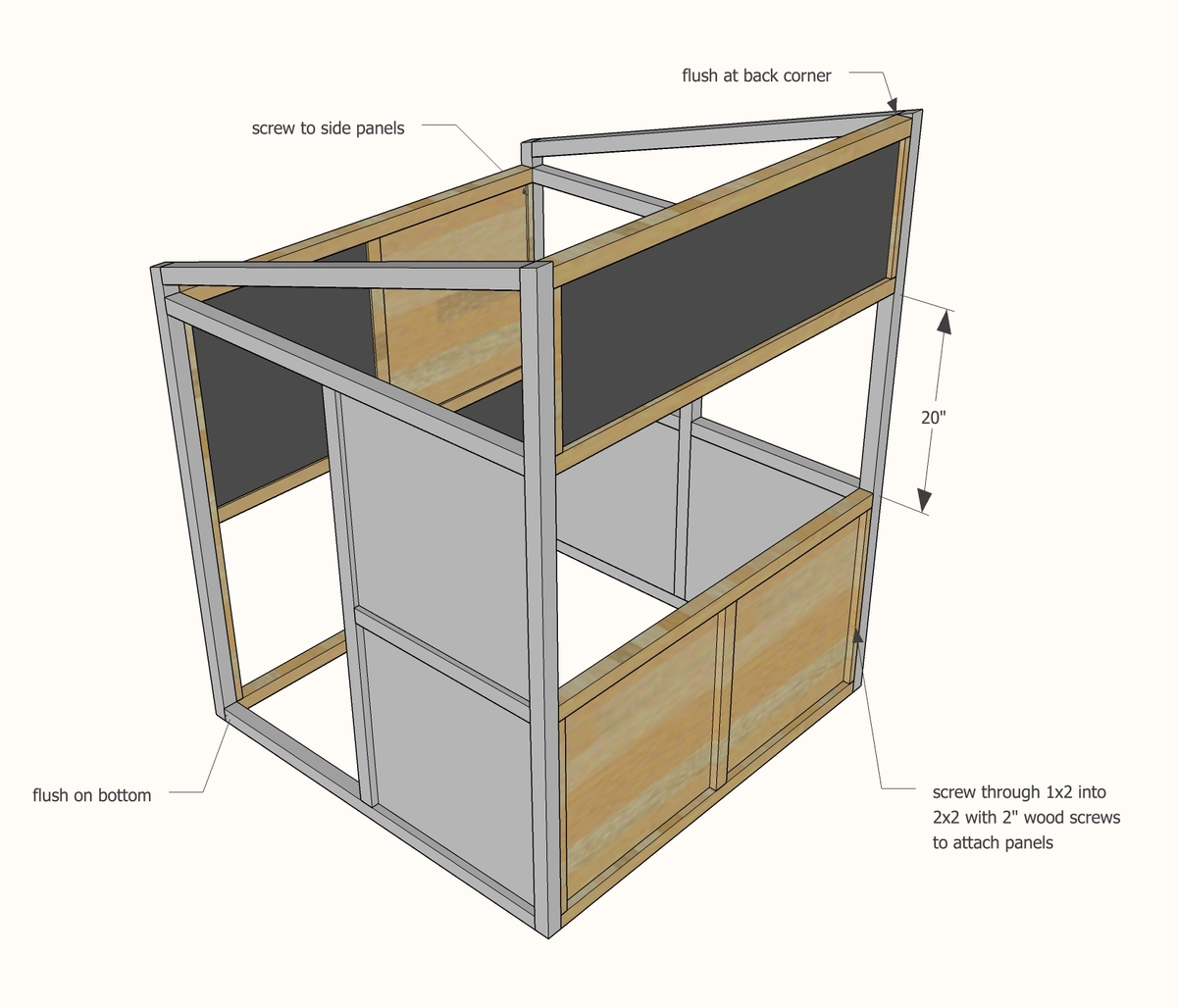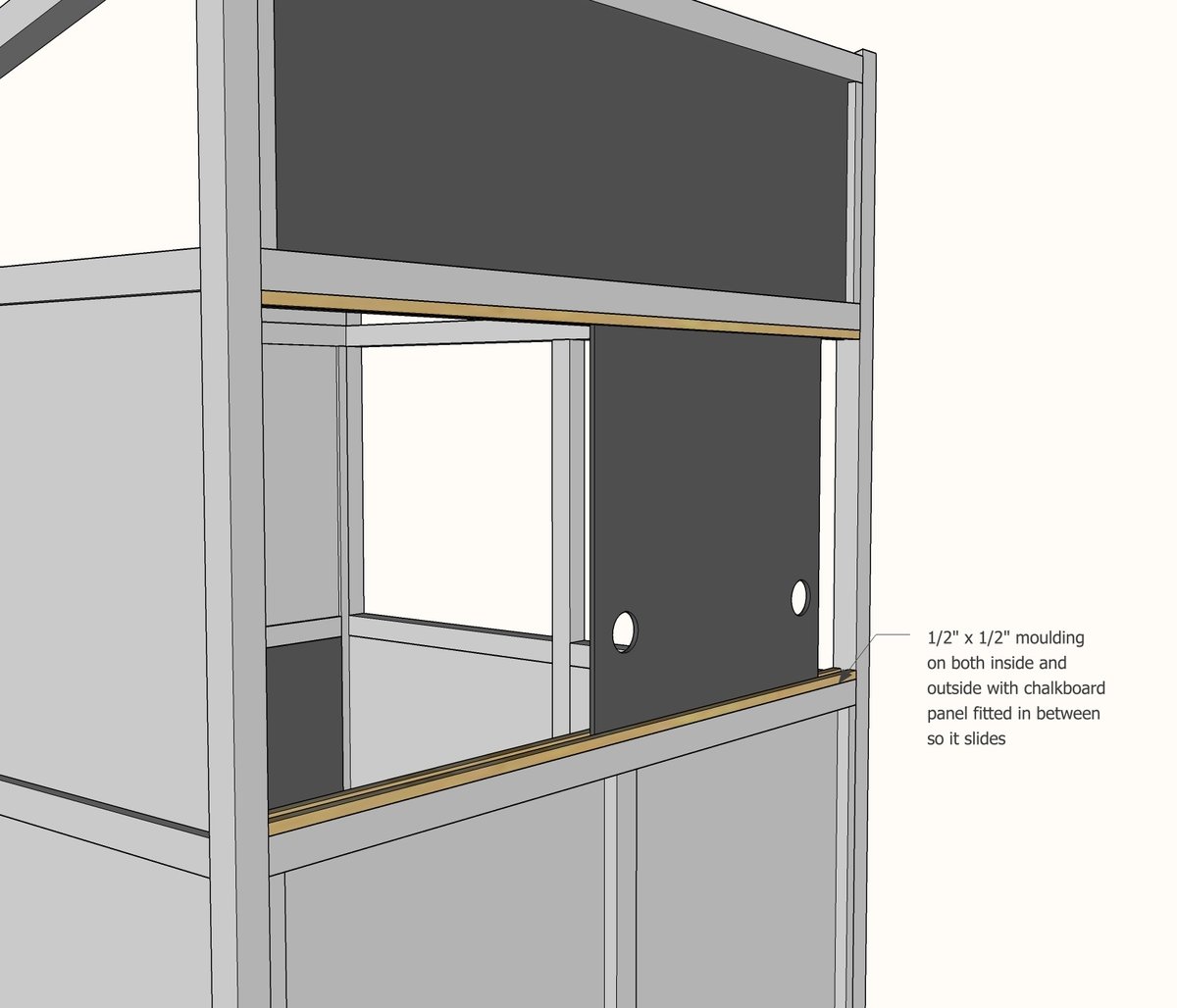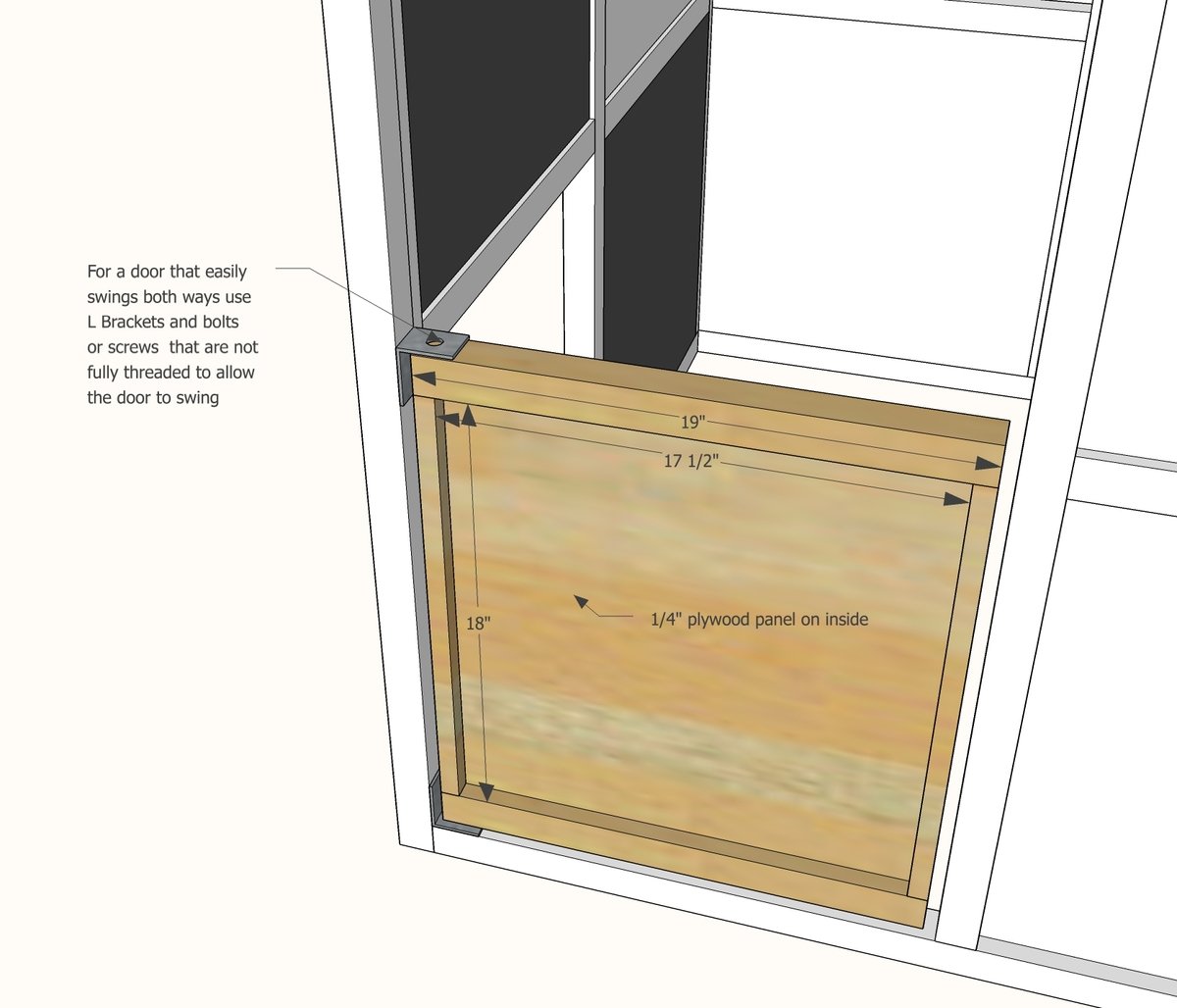
DIY an indoor playhouse - free plans from Ana-White.com
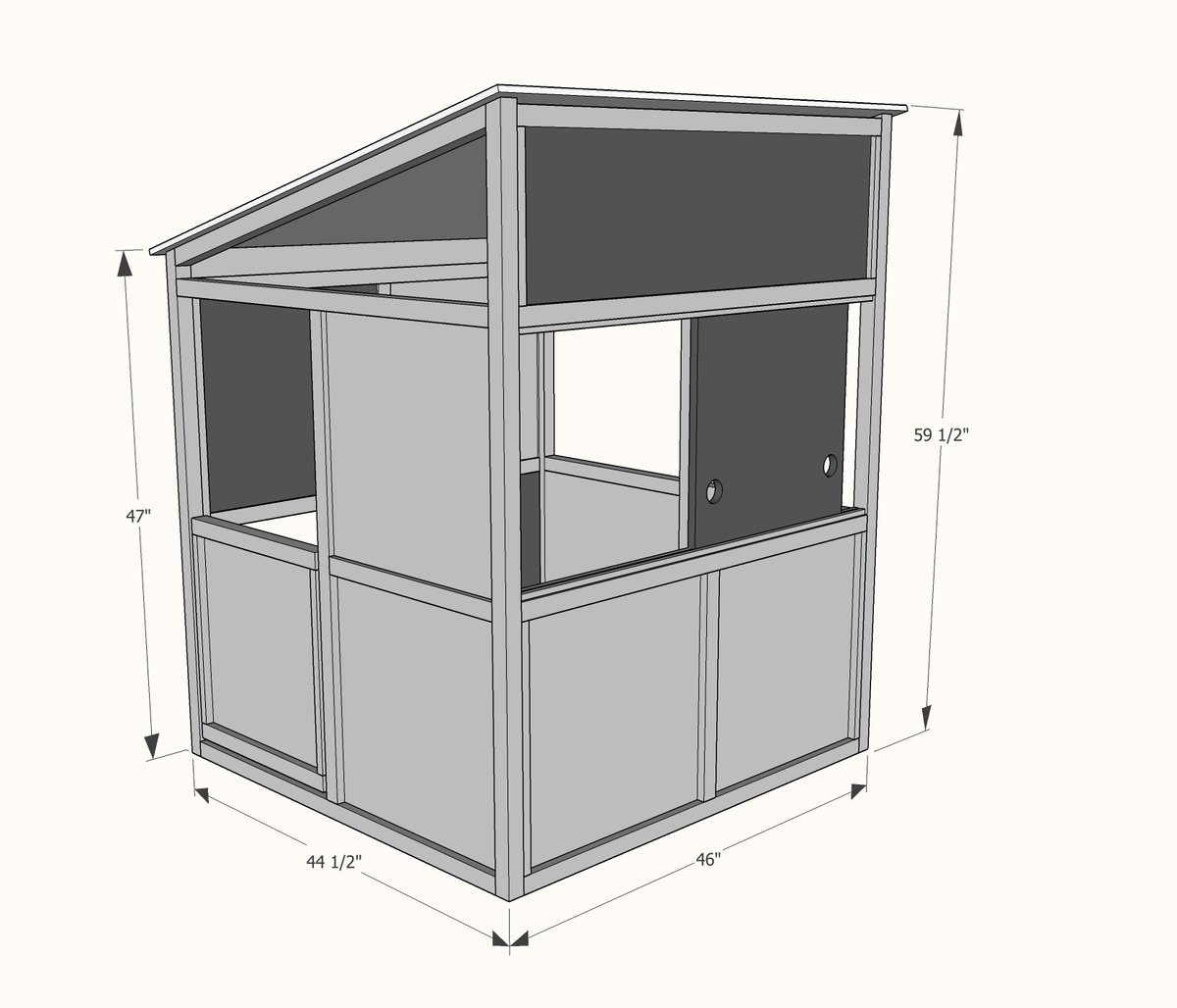
Preparation
12 - 2x2 @ 8 feet long
2 - 1x2 @ 8 feet long
1 - 1x3 @ 4 feet long
1-1/2 sheet of 1/4" thick plywood
1/2 sheet of 1/2" thick plywood
93 feet of 1/2" x 1/2" moulding
2 Cafe Hinges for Door Swing
SIDE PANELS
2 - 2x2 @47-1/4" (long point measurment, one end cut at 15 degrees off square)
2 - 2x2 @ 58-3/4" (long point measurement, one end cut at 15 degrees off square)
2 - 2x2 @ 43" (long point to long point measurement, both ends cut at 15 degrees off square, ends ARE parallel)
6 - 2x2 @ 41-1/2"
3 - 2x2 @ 20"
BACK PANEL
2 - 2x2 @ 43"
2 - 1x2 @ 41-1/2"
1 - 2x2 @ 41-1/2"
2 - 2x2 @ 20"
FRONT PANELS
4- 2x2 @ 43"
2 - 1x2 @ 20"
1 - 2x2 @ 20"
2 - 1x2 @ 12-3/8"
PANELS
18 - 1/2" x1/2" moulding @ 20"
18 - 1/2" x 1/2" moulding @ 19"
10 - 1/4" thick plywood or hardboard @ 20" x 20"
1 - 1/4" thick plywood or hardboard @ 12-3/8" x 41-1/2"
4 - 1/2" x 1/2" moulding @ 41-1/2"
TOP
1 - 1/2" thick plywood @ 48" x 48"
1 - 1x3 @ 43"
DOOR
2 - 2x2 @ 19"
2 - 1x2 @ 18"
1/4" plywood 18" x 17-1/2"
moulding to hold plywood in place
Please read through the entire plan and all comments before beginning this project. It is also advisable to review the Getting Started Section. Take all necessary precautions to build safely and smartly. Work on a clean level surface, free of imperfections or debris. Always use straight boards. Check for square after each step. Always predrill holes before attaching with screws. Use glue with finish nails for a stronger hold. Wipe excess glue off bare wood for stained projects, as dried glue will not take stain. Be safe, have fun, and ask for help if you need it. Good luck!
Instructions
Step 2
Step 6
Step 10
It is always recommended to apply a test coat on a hidden area or scrap piece to ensure color evenness and adhesion. Use primer or wood conditioner as needed.




